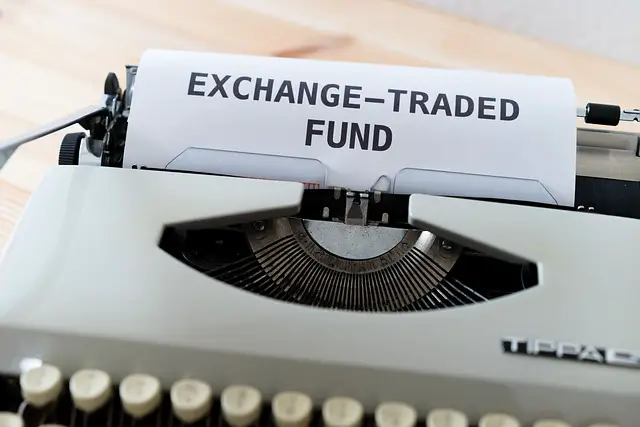What is an ETF?

What is an ETF? An ETF, or Exchange-Traded Fund, is a type of investment fund and security that tracks a collection of assets, such as stocks, bonds, commodities, or a combination of these, and trades like a stock on an exchange. ETFs offer a convenient way for investors to access a diverse portfolio of assets with a single purchase and often provide lower management fees compared to traditional mutual funds.
How Do ETFs Work?
ETFs work by pooling money from multiple investors to purchase a portfolio of underlying assets, such as stocks, bonds, commodities, or a combination of these. The performance of the ETF is then tied to the performance of the underlying assets.
An Exchange-Traded Fund is created when an issuer, such as a bank or asset management firm, determines the type of assets it wants to include in the ETF and the desired investment objective. The issuer then hires a portfolio manager to select and purchase the underlying assets, which are held in a trust.
Investors can then buy and sell shares of the ETF on a stock exchange, just like they would for an individual stock. The price of an ETF share is based on the value of the underlying assets, which are revalued on a daily basis.
When an investor buys shares in an ETF, they are essentially purchasing a piece of the entire portfolio of underlying assets. This provides a convenient way for investors to gain exposure to a diverse range of assets with a single investment, rather than having to purchase each individual asset separately. Additionally, the portfolio manager takes care of buying and selling assets within the ETF, which saves individual investors time and effort compared to managing their own portfolios.
Overall, ETFs offer a flexible, low-cost, and convenient way for investors to access a diverse range of assets and potentially achieve their investment objectives.
Different Types of ETFs
There are several types of ETFs, each with its own unique investment objective and strategy. Some of the most common types of ETFs include:
- Equity ETFs: These ETFs hold a diversified portfolio of stocks and provide exposure to different segments of the equity market, such as large-cap, mid-cap, small-cap, international, or sector-specific stocks.
- Bond ETFs: These ETFs hold a diversified portfolio of fixed-income securities, such as bonds issued by governments, corporations, or municipal entities. Bond ETFs can provide exposure to different segments of the bond market, such as short-term, intermediate-term, or long-term bonds, as well as investment-grade or high-yield bonds.
- Commodity ETFs: These ETFs hold physical commodities, such as gold, silver, oil, or agricultural products, or provide exposure to commodity-linked derivatives.
- Inverse ETFs: These ETFs are designed to move in the opposite direction of the underlying index or asset. Inverse ETFs can be used to hedge against market downturns or take advantage of market declines.
- Currency ETFs: These ETFs provide exposure to different currencies, such as the US dollar, euro, or Japanese yen.
- Thematic ETFs: These ETFs hold a portfolio of stocks that are related to a specific theme, such as clean energy, technology, or healthcare.
- Actively managed ETFs: These ETFs are managed by professional portfolio managers who use a discretionary approach to select the underlying assets.
The specific types of ETFs available can vary by market and jurisdiction and that ETFs may also differ in terms of their investment objective, risk level, and expense ratio. It’s recommended to thoroughly research and compare different ETFs before making an investment decision.
Are ETFs a Good Investment?
Whether Exchange-Traded Funds are good investments depends on an individual’s specific financial goals, risk tolerance, and investment strategy.
In general, ETFs can be a good investment option for several reasons:
- Diversification: ETFs provide access to a diverse range of assets, reducing the risk of investing in a single stock or sector.
- Low costs: Many ETFs have lower management fees compared to traditional mutual funds, making them a cost-effective way to invest.
- Liquidity: ETFs are traded on stock exchanges, making it easy to buy and sell shares throughout the day.
- Flexibility: ETFs offer a variety of investment options, from broad-based index funds to niche sector-specific funds, allowing investors to tailor their portfolios to meet their specific investment objectives.
As with any investment, there are also risks associated with ETFs, such as market risk and the risk of loss due to fluctuations in the value of the underlying assets. It’s important for investors to carefully consider their financial goals and risk tolerance before investing in ETFs.
How to Get Started Investing in ETFs?
Getting started with investing in ETFs is a straightforward process, and can be done in the following steps:
- Evaluate your financial goals and risk tolerance: Before investing in ETFs, it’s important to determine your investment goals and understand your risk tolerance. This will help you determine the type of ETFs that are appropriate for your portfolio.
- Research ETFs: Research different ETFs that align with your investment goals and risk tolerance. You can compare ETFs by their performance, fees, investment objectives, and underlying assets.
- Open a brokerage account: To invest in ETFs, you will need to open a brokerage account. There are many reputable online brokerages that offer ETF trading, and you can compare their fees and services to determine which one is right for you.
- Fund your account: Once you have opened a brokerage account, you can fund your account with the amount of money you want to invest in ETFs.
- Buy ETF shares: Once your account is funded, you can start buying ETF shares. You can place an order to buy ETF shares through your brokerage’s trading platform.
- Monitor your portfolio: Once you have invested in ETFs, it’s important to regularly monitor your portfolio and make adjustments as needed to ensure that your investments are aligned with your financial goals.
It’s recommended to seek the advice of a financial advisor, who can help you determine if ETFs are appropriate for your individual investment portfolio and provide guidance on how to get started. Additionally, it’s important to keep in mind that investing in ETFs, like any investment, carries the risk of loss, and it’s important to educate yourself on the risks and benefits of investing before getting started.


